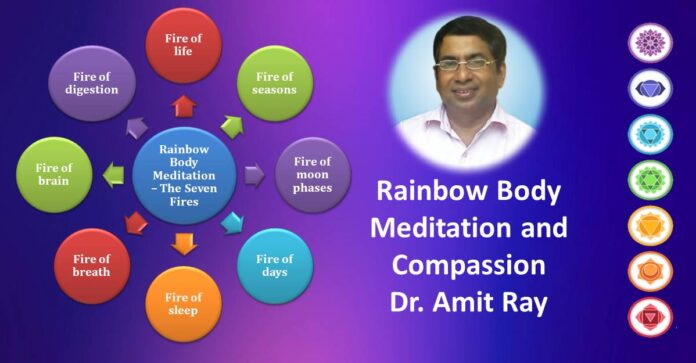In a world perpetually buzzing with noise and haste,the pursuit of stillness frequently enough feels like chasing a mirage.Amit RayS Embracing Stillness steps gently into this chaotic landscape, offering readers a pathway toward mindfulness that is both profound and accessible. This review delves into the heart of Ray’s guide,unpacking its meditative wisdom and exploring how it invites us to pause,reflect,and reconnect with the present moment. Through thoughtful examination, we consider the book’s unique contributions to the growing conversation around mindfulness and inner peace.
Understanding the Core Principles of Mindfulness Explored in Embracing Stillness and Their Practical Applications for Daily Life
At the heart of amit Ray’s approach lies the nurturing of present-moment awareness, a principle that encourages stepping away from the noise of past regrets and future anxieties. This grounded presence is more than just a passive state; it invites a purposeful attention to the nuances of breath, thought, and sensation. Ray artfully blends ancient wisdom with contemporary insights, revealing mindfulness as a dynamic interplay between stillness and alertness.Practically, this translates into simple yet profound habits-pausing briefly before reactions, tuning into the body’s signals during stress, or embracing moments of quiet reflection amid daily chaos.
- Non-judgmental observation: Accepting thoughts and feelings without labeling them as ‘good’ or ‘bad.’
- Compassionate awareness: Cultivating kindness towards oneself and others, especially during challenging moments.
- Intentional breathing: Using the breath as an anchor to return to the now whenever the mind wanders.
| Core Principle | Practical Application |
|---|---|
| Present-Moment Awareness | Start the day with 5 minutes of mindful breathing |
| Non-Judgmental Observation | Notice emotional reactions during conflicts without immediate response |
| Compassionate Awareness | Practice self-kindness through affirmations or gentle touch |
This blend of theory and practice invites readers to create pockets of stillness where they might otherwise rush. Whether through mindful pauses during work or intentional evening reflections, the principles guide a transformation of the ordinary into a sanctuary of calm. The beauty of Ray’s work lies in its accessibility-mindfulness isn’t reserved for monks or yogis; rather, its a cultivated habit that anyone can weave into the fabric of everyday life, enriching relationships, enhancing focus, and fostering emotional resilience.
How Amit Ray Weaves ancient Wisdom and Modern Practices into a Cohesive Mindfulness Framework That Resonates Deeply

What’s compelling is how Ray structures this synthesis into digestible elements, often highlighting key principles through clear, yet evocative lessons. Such as, he emphasizes not just ”paying attention,” but consciously cultivating compassion alongside awareness, fostering growth on emotional, mental, and spiritual levels together. Below is a simplified comparison of how traditional elements harmonize with modern adaptations in his mindfulness framework:
| Ancient Wisdom | Modern Practices |
|---|---|
| Chakra Meditation | energy Mapping in Psychology |
| Mantra Repetition | Neural Pattern Conditioning |
| Silent Sitting | Mindfulness-Based Stress Reduction (MBSR) |
| Compassion Cultivation | Emotional Intelligence Training |
- Holistic Integration: His teachings do not isolate mind from body or spirit; they weave these dimensions seamlessly.
- Pragmatic Spirituality: Mindfulness becomes a tool for everyday resilience, not just rarefied enlightenment.
- Encouragement of Self-Discovery: Instead of prescribing a one-size-fits-all path, Ray invites personal exploration and inner dialog.
A Close Look at the Meditation Techniques Presented and Their Impact on Mental Clarity and Emotional Resilience

Delving into Amit Ray’s meditation techniques reveals a profound blend of simplicity and depth that fosters both mental clarity and emotional resilience. Central to his method is the practice of mindful breathing, which anchors the mind amidst the chaos of everyday life, allowing individuals to experience calmness without resistance. complementing this are his guided visualizations that encourage practitioners to observe their thoughts without attachment, cultivating a heightened awareness that promotes clarity. This gentle acceptance of the present moment acts as an antidote to mental clutter, enabling the user to navigate stressors with increased equanimity.
Furthermore, the guide emphasizes the cultivation of emotional strength through compassion-focused meditations, which nurture patience and empathy towards oneself and others. The systematic combination of these techniques works synergistically to build a resilient emotional foundation.The table below summarizes the key meditation practices and their primary psychological benefits:
| Meditation Technique | Core Focus | Impact on Mind & Emotion |
|---|---|---|
| Mindful Breathing | Present moment awareness | Enhances concentration and reduces anxiety |
| Thought Observation | Non-attachment to thoughts | Clears mental fog, promotes clarity |
| Compassion Meditation | Kindness and empathy | Strengthens emotional resilience |
- Consistency: Daily practice magnifies the benefits over time.
- Adaptability: Techniques can be tailored to suit individual needs and schedules.
- Integration: Encourages seamless incorporation into daily routines for long-lasting impact.
Exploring the Author’s Perspective on Silence and Stillness as essential Tools for Inner Peace and Self-Discovery

Amit Ray delves deeply into the transformative power of silence and stillness,presenting them not merely as passive states but as dynamic gateways to profound inner peace and self-awareness.He suggests that in a world perpetually inundated with noise and distraction, these elements serve as quiet sanctuaries where one can reconnect with their authentic self. By embracing moments of quietude, individuals are encouraged to observe their thoughts without judgment, allowing for a calming space where clarity and insight naturally emerge.This perspective challenges the conventional rush towards external achievements, rather highlighting the importance of turning inward and honoring the subtle whispers of the mind and soul.
- Silence as a mirror: reveals hidden emotions and dormant thoughts
- Stillness as a practice: cultivates mindfulness and emotional resilience
- Inner peace through detachment: learning to observe without reaction
To better understand how these concepts interplay, Amit Ray presents a concise framework that distinguishes their unique characteristics and shared benefits. This approach aids readers in adopting practical mindfulness routines rooted in both silence and stillness, tailored to modern life’s demands without losing spiritual depth.
| Aspect | Silence | Stillness |
|---|---|---|
| Nature | Absence of sound, external or internal | calmness of body and mind, often in motionlessness |
| Role in Mindfulness | Creates space for reflection | Anchors present moment awareness |
| Benefit | Deep introspection, clarity | Balance, emotional stability |
The Role of Compassion and Empathy in Amit Ray’s Mindfulness Approach and its Relevance in Contemporary Society

Such principles resonate powerfully in today’s rapidly changing and often fragmented society. The practice of mindfulness infused with empathy nurtures emotional resilience and social cohesion by encouraging:
- Active listening in personal and professional relationships
- Awareness of shared human vulnerabilities amidst diversity
- Reduction of reactive hostility through conscious presence
- Collaboration and collective healing in community settings
| Mindfulness Trait | Modern Benefit |
|---|---|
| Compassion | Enhanced interpersonal trust |
| Empathy | Improved conflict resolution |
| Present Moment Awareness | Reduced stress and anxiety |
Through this lens, Ray’s teachings offer more than spiritual guidance-they propose a practical framework for cultivating kindness and presence that can meaningfully address the emotional and social challenges of our era.
Balancing Technology and Mindfulness Practices in Embracing Stillness for a More Grounded Digital Experience
To facilitate this balance, consider adopting habits that promote intentional digital use. Below is a helpful guide inspired by Ray’s principles to cultivate a mindful relationship with technology:
- Scheduled Screen Breaks: Allocate specific times for checking devices to avoid constant bombardment.
- Mindful Notifications: Customize alerts, allowing only those that add value to your day.
- Breath Awareness: Practice deep breaths before and after using technology to maintain calm presence.
- Digital Journaling: Reflect on your digital interactions and emotional responses.
- Nature Connection: Balance screen time with moments spent outdoors to restore inner calm.
| Practice | benefit | Ideal Duration |
|---|---|---|
| Scheduled Screen Breaks | Reduces overwhelm | 5-10 mins every hour |
| Mindful Notifications | Improves focus | All day (customized) |
| Breath Awareness | Calms the mind | 1-3 mins per session |
| Digital Journaling | Enhances self-awareness | 10 mins daily |
| Nature connection | Recharges energy | 15-30 mins daily |
Assessing the Book’s Accessibility for Beginners and Its Depth for Seasoned Practitioners Seeking Growth
- Concise, digestible chapters designed for gradual immersion
- mindfulness prompts that invite reflection without pressure
- inclusive language that resonates across diverse backgrounds
For seasoned practitioners, the text delves deeper into the nuances of mindfulness, offering layers of insight that challenge and expand existing wisdom. The exploration of stillness transcends basic meditation, weaving in philosophical perspectives and subtle energy concepts that provoke thoughtful contemplation. Readers focused on growth will appreciate the progressive nature of the content, as well as the rich interlacing of practical advice and metaphysical inquiry. The following table outlines how this dual approach serves varying levels of experience:
| Audience | Focus | Value |
|---|---|---|
| Beginners | Foundation & Practice | Accessible exercises, clear concepts, confidence building |
| Seasoned practitioners | Deepening & Expansion | Philosophical insights, advanced techniques, contemplative challenges |
Visualizing the Guided Exercises and Their Potential to Foster Long-Term habits of Presence and Awareness
The exercises Amit Ray presents go beyond traditional mindfulness practices by inviting participants into a space where stillness is not just observed but deeply experienced. Through guided breath-work, gentle body scans, and visualization techniques, these practices transport the mind into moments of clarity and calm without the pressure of forcing attention. The beauty lies in their simplicity: by encouraging small, intentional pauses throughout the day, Ray’s methods cultivate an internal rhythm that naturally fosters sustained presence. These moments accumulate like quiet ripples,gradually carving new neural pathways that support ongoing awareness and emotional balance.
To better understand the impact of these guided exercises, it helps to visualize the components that shape their effectiveness:
- Accessibility: Exercises designed for all levels, requiring no prior experience or special settings.
- Adaptability: Short, adaptable sessions that fit seamlessly into busy lives.
- Focus on Sensory Awareness: Emphasis on tuning into subtle bodily sensations and environmental cues.
- Consistency: Small daily practices that encourage habit formation without overwhelm.
| Exercise | Duration | Core Benefit |
|---|---|---|
| Mindful Breathing | 3-5 mins | Focus and calm |
| Body Scan | 5-7 mins | Heightened body awareness |
| Nature Visualization | 4-6 mins | Emotional grounding |
When engaged regularly, these exercises become more than momentary escapes; they transform into enduring habits subtly shifting the mind’s default towards mindfulness. This slow but steady rewiring alone holds the potential to deepen one’s capacity for presence, making the art of being fully in the “now” accessible far beyond the cushion.
How Embracing Stillness Encourages a Transformative Shift in Perception and Promotes Sustainable Well-Being
Adopting stillness does not simply serve as a temporary respite, but rather as a cornerstone for sustainable well-being. the gentle rhythm of mindful pause encourages balance, reduces stress, and nurtures resilience that can withstand life’s fluctuations. Key benefits highlighted include:
- Heightened emotional regulation-building calm amidst chaos
- Improved mental clarity-cutting through cognitive clutter
- Strengthened inner peace-anchoring joy beyond external circumstances
| Aspect | Impact of Stillness |
|---|---|
| Perception | Enhanced awareness and mindful observation |
| Well-Being | Sustained emotional balance and calm |
| Self-Connection | Deepened sense of inner harmony and clarity |
Insights on Integrating Mindfulness into Professional Settings Inspired by Amit Ray’s Holistic Teachings
In professional environments where constant demands and fast-paced challenges prevail, the essence of mindful stillness advocated by Amit Ray stands out as a transformative approach. His teachings encourage professionals to cultivate inner calm and heightened awareness, which not only enhances decision-making but also fosters emotional resilience amidst workplace pressures. By weaving mindfulness practices seamlessly into daily routines-such as brief meditation breaks, conscious breathing exercises, and reflective pauses-organizations can empower employees to maintain focus, reduce stress, and nurture creativity. These simple yet profound habits create a ripple effect, leading to a more balanced and productive work culture.
Integrating these principles into corporate strategies involves more than surface-level initiatives; it demands genuine commitment to holistic well-being. Amit Ray’s approach emphasizes the synergy between mind, body, and surroundings, urging workplaces to adopt a more compassionate and human-centered ideology.Consider the following key elements drawn from his teachings that make mindfulness integration practical and effective:
- Intentional environment: Designing quiet,calm spaces for reflection and relaxation.
- Mindful dialogue: Encouraging active listening and presence in team interactions.
- Balanced scheduling: Incorporating brief mindful breaks between high-focus tasks.
- Ongoing education: Providing workshops and resources centered on holistic awareness.
| Mindfulness Practice | Benefit | Application |
|---|---|---|
| Breathing Exercises | Reduces anxiety | Pre-meeting relaxation |
| Silent Reflection | Enhances clarity | Morning routine |
| Body Scan | Improves focus | During breaks |
Recommendations for Readers Seeking to Deepen Their Mindfulness Journey Through Complementary Resources
For those who appreciate a more interactive or community-driven experience, joining local meditation groups or online forums can cultivate shared growth and accountability. Complement these with enriching audio-visual content such as TED Talks on mindfulness or soothing soundscapes that align with your meditation rhythm. Below is a simple table outlining complementary resources to consider for diverse paths within your mindfulness journey:
| Resource Type | Recommended Example | Benefit |
|---|---|---|
| Books | The Power of Now – Eckhart tolle | Enhances present-moment awareness |
| apps | Calm | Structured daily practices |
| Online Communities | Mindful.org Forums | Peer support and shared insights |
| Audio-Visual | TED Talks: mindfulness & Neuroscience | Science-backed inspiration |
The Subtle Art of Patience and Acceptance as Illustrated by the Author and Its Practical Benefits in Stress Reduction
Practically speaking, integrating these concepts into daily life can lead to meaningful stress reduction. The author highlights several key benefits that can transform one’s psychological landscape:
- enhanced emotional resilience: Cultivating acceptance softens emotional reactivity and promotes balanced responses.
- Improved focus and clarity: Patience trains the mind to linger with experience, sharpening attention and decision-making.
- Reduced cortisol levels: Regular practice of mindful patience has been linked to physiological relaxation, easing anxiety and tension.
| Benefit | Practical Impact |
|---|---|
| Emotional resilience | Navigating stress without overwhelm |
| Focus Enhancement | Clearer thinking under pressure |
| Physiological Calm | Lowered anxiety and improved wellbeing |
Amit Ray’s Background and Philosophical Influences That Shape the Unique Voice Behind Embracing Stillness
Amit Ray’s journey into mindfulness and spirituality is deeply rooted in a rich tapestry of philosophical traditions from both the East and the West. His background is a blend of rigorous academic study and profound personal practice,which brings a unique depth to his teachings. Trained in meditation for decades, Ray draws inspiration from ancient Indian spiritual masters as well as modern mindfulness teachers, creating a synthesis that is both timeless and accessible. His work often reflects the influence of Vedanta philosophy, Buddhist principles, and the contemplative insights found in Zen Buddhism, weaving these elements into a cohesive voice that resonates with readers seeking stillness amidst the chaos of daily life.
The philosophical underpinnings that shape his perspective can be seen clearly in the values and practices he emphasizes. For example, his focus on compassion, self-awareness, and the interconnectedness of all beings echoes the foundational teachings of several spiritual traditions. Key influences include:
- Advaita Vedanta: emphasizing non-duality and the idea that the self and the universe are inherently one.
- Buddhist Mindfulness: Cultivating present-moment awareness without judgment.
- Sufi Mysticism: Highlighting love, surrender, and the inner journey toward divine stillness.
| Philosophical Element | Core Principle | Impact on Ray’s Work |
|---|---|---|
| Vedanta | Non-dualism | Encourages holistic awareness beyond ego |
| buddhism | Mindfulness | Promotes deep presence and calmness |
| Sufism | Love & Surrender | Fosters compassion and inner peace |
in tracing the quiet pathways illuminated by Amit Ray’s Embracing Stillness, this review has wandered through the subtle art of mindfulness as both practice and philosophy. Whether you are a seasoned meditator or a curious newcomer, Ray’s gentle guidance offers a contemplative space to pause amidst life’s relentless currents. Ultimately, Embracing Stillness invites readers not just to learn about stillness, but to embody it-a nuanced journey that resonates beyond the pages and into the rhythms of everyday living. As the final words settle, the book’s true call remains: to embrace the silence within and find clarity there, quietly and without hurry.









